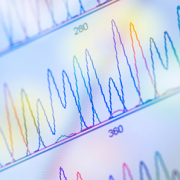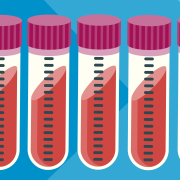The microbiome and childhood health
The bacteria in the gut is seen more and more as an important factor in health. We look at the latest on how, and why, it matters
Each of us has trillions of micro-organisms in our digestive tracts, forming a complex ecosystem known as the microbiome (or microbiota). These bacteria, microbes and other micro-organisms are thought to be crucial for our digestion, gut health and immune system.
The microbiome has been of great interest to scientists and researchers for years. Studies have reported various links between the microbiome and health, but here we focus on the latest findings regarding the impact of the microbiome on health in childhood.
Caesareans and the infant gut
There is evidence that children born by c-section go on to have higher rates of asthma and obesity, and that autoimmune conditions such as allergies and diabetes are associated with lack of exposure to certain microbes in early life.
Researchers from the Wellcome Sanger Institute, UCL, the University of Birmingham and international collaborators have recently confirmed that how a baby is delivered significantly alters the composition of their gut microbiome in early life.
Different microbiomes
The researchers analysed over 1600 gut bacteria samples from nearly 600 births in London and Leicester hospitals. The samples came from 314 vaginally-born babies and 282 born via c-section, plus 175 of the mothers. Samples from the infants taken at 4, 7 and 21 days after birth were analysed using DNA sequencing and genomic analysis.
The analyses showed a significant variation between the groups of babies born by the different delivery methods:
“I could take a sample from a child and tell you with a high-level certainty how they were born,” said Dr Trevor Lawley from the Wellcome Sanger Institute, senior author on the paper.
The vaginally delivered babies’ samples contained many more health-associated (commensal) bacteria compared to babies born by caesarean. By contrast, the babies born by caesarean had many more opportunistic bacteria in their guts, especially Enterococcus and Klebsiella strains which are typically associated with hospital acquired infections. Although these do not normally cause harm in the gut, they are more likely to be resistant to antibiotics.
A complex picture
The researchers pointed out that multiple factors may contribute to the difference: women undergoing c-sections are usually given antibiotics to reduce the chances of postoperative infection, and these can cross the placenta into the baby. Also, on average, caesarean-born babies spend longer in hospital and wait longer to be fed breastmilk than their vaginally-born peers.
The researchers also tested the hypothesis that the infant gut is colonised by bacteria acquired by the baby in the birth canal, which led to the controversial practice of ‘vaginal seeding’ – swabbing newborns with vaginal fluids after a caesarean birth. By analysing the genomes of the infants’ gut flora, however, the team confirmed that very few vaginal bacteria were present in the samples, and there was no difference between the groups of babies. Rather, the intestinal biome of the mother made up a large proportion of the babies’ gut bacteria – significantly more so in the vaginally born children.
In the follow-up samples, taken months later, the difference between the two groups’ microbiomes had diminished.
“As the babies grow and take in bacteria when they feed and from everything around them, their gut microbiomes become more similar to each other. After they have been weaned, the microbiome differences between babies born via caesarean and delivered vaginally have mainly evened out,” said senior author Dr Nigel Field from UCL. “We don’t yet know whether the initial differences we found will have any health implications.”
Genomics, the microbiome and autoimmune disease
A new study, published in Nature Communications, has shown that the gut microbiomes of children whose genomes place them at high risk of developing type 1 diabetes are different from those of children with average or low risk.
The children who had a higher genetic predisposition to type 1 diabetes were found to lack some types of bacteria found in the samples of children with lower risk.
“Certain bacterial species were not found at all in children with high genetic risk but were found in those with low or no risk. This is very interesting, as this could mean that certain species have protective effects and may be useful in future treatment to prevent autoimmune diseases. It may be that certain species cannot survive in individuals with high genetic risk,” said study author Johnny Ludvigsson, professor of clinical and experimental medicine at Linköping University, and consultant at Linköping University Hospital.
Type 1 diabetes: the need for further research
Type 1 diabetes is an autoimmune condition where the body attacks the cells in the pancreas that are responsible for making insulin, and as a result the ability to produce insulin is lost. Precisely what triggers the immune system to attack insulin-producing cells is not understood. A number of genes are associated with an increased risk of developing the condition, especially the HLA genes which code for proteins that help the immune system distinguish between normal body cells and those infected with bacteria or viruses. However, HLA variants are not sufficient to cause diabetes, and some people at high genetic risk remain healthy.
The relationship between the gut microbiome and the immune system is well known, so it is a promising avenue for research into the environmental factors determining who will develop type 1 diabetes and related autoimmune conditions.
Gold-dust data
The researchers behind this study used data from the All Babies in Southeast Sweden (ABIS) study, where 17,000 children born from 1997-99 were followed for 6 years. At regular intervals biological samples were collected from the participating children and questionnaires about their health were also completed. This provides a uniquely detailed dataset, allowing researchers to study how environmental and genetic factors work together.
This particular study looked at 403 children, who were classified as having high, neutral or low risk of developing type 1 diabetes based on their HLA gene variants. The gut microbiome of the children was analysed from stool samples taken when the children were 12 months old.
While previous studies had looked at the relationship between gut flora and type 1 diabetes only in children with high genetic risk, here researchers had the advantage of comparing children across the risk spectrum.
Their findings shed light on the interaction between genomic risk and an individual’s response to environmental factors in the development of autoimmune diseases; and, whilst focusing on type 1 diabetes, may also have relevance for other diseases such as coeliac disease in the future.
–









